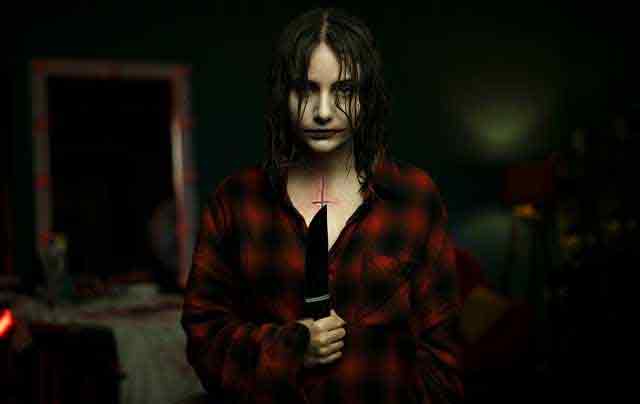Heartbeats & Hauntings: A Guide to Horror Films That Will Keep You Up at Night
When the lights dim and the screen flickers to life, a palpable tension seizes the air. It's a sensation known intimately by aficionados of horror films, those who seek out the shadows and whispers that promise a journey into the heart of fear itself. Horror is an ancient craft, refined over centuries to become a silver-screen spectacle that lures us into its dark embrace, offering an adrenaline-fueled escape from the mundane. This is your guide through a labyrinth of terror, where every corner turned reveals another aspect of the horror films that will keep you up at night.
The horror film's lineage is as old as cinema itself, with Georges Melies's 'Le Manoir du Diable' (1896) often cited as the first example. However, it was in the 1920s and '30s that horror truly began to take shape with films like 'Nosferatu' (1922) and 'Frankenstein' (1931). These early entries not only set a precedent but also tapped into universal fears of death, the unknown, and the monstrous other. The DNA of these classics is still evident in modern horror: the foreboding atmosphere, the creeping dread, and the sudden shocks that send hearts racing.
But what makes horror films so effective at frightening viewers? It's a concoction of visceral visuals, unsettling narratives, and an uncanny ability to play on our most primal fears. The best horror films create an immersive world where the normal rules don't apply, using suspense and surprise to manipulate our emotions. They confront us with our vulnerabilities fear of isolation ('The Shining'), fear of invasion ('Invasion of the Body Snatchers'), and fear of losing control ('The Exorcist') and by doing so, they achieve a level of intimacy few other genres can claim.
As we tiptoe through the decades, each era brings its own flavor of fear. The atomic age birthed a paranoia about science gone awry in films like 'Godzilla' (1954) and 'Them!' (1954), while the sociopolitical unrest of the 1960s and '70s was reflected in nerve-wracking masterpieces such as 'Night of the Living Dead' (1968) and 'The Texas Chain Saw Massacre' (1974). These weren't just tales to elicit screams; they were mirrors held up to society's own monstrosities.
The 1980s saw horror become a cultural juggernaut with franchises like 'A Nightmare on Elm Street' and 'Friday the 13th.' These slasher films brought horror into suburban homes, introducing iconic villains who would haunt our collective consciousness for years. But it wasn't just masked killers that captivated audiences; psychological horror also carved out its niche with cerebral nightmares like 'The Thing' (1982) and 'Hellraiser' (1987).
Moving into the 21st century, horror has shown no signs of slowing down. Found-footage flicks like 'The Blair Witch Project' (1999) reinvigorated the genre with their raw authenticity while paving the way for successes like '[REC]' (2007) and 'Paranormal Activity' (2007). The new millennium has also seen a resurgence in haunting narratives with films such as 'The Babadook' (2014) and 'Hereditary' (2018), which delve deep into psychological terror and familial trauma.
So what makes a horror film truly unforgettable? It's an intricate dance between tension and release the build-up of suspense followed by a cathartic scare. Consider 'Jaws' (1975), where Spielberg masterfully plays with anticipation, often withholding the shark from view, leaving viewers gnawed by anxiety. Or take 'Psycho' (1960), where Hitchcock's precision in pacing transforms a simple shower scene into one of cinema's most harrowing moments.
Now let's step into some notable examples that have left an indelible mark on the genre:
-
Halloween (1978) - John Carpenter's minimalist approach to terror introduced Michael Myers, turning babysitting into an ordeal of survival.
-
The Silence of the Lambs (1991) - A sophisticated blend of crime thriller and horror that brought psychological depth to its characters, making Hannibal Lecter a figure of articulate menace.
-
The Ring (2002) - The American adaptation of this Japanese ghost story capitalized on eerie imagery and a creeping curse that felt all too plausible in an era dominated by technology.
For those seeking a terrifying movie experience, consider exploring international offerings such as Spain's '[REC]' or South Korea's 'A Tale of Two Sisters' (2003). These films showcase how different cultures approach storytelling, often incorporating folklore and traditions that add layers to their terrors.
Horror has also found fertile ground on streaming platforms like Netflix with hits such as The Haunting of Hill House series a testament to how serialized storytelling can expand on atmospheric hauntings over time. And with Jordan Peele's recent contributions like 'Get Out' (2017) and 'Us' (2019), social commentary has been revived as a potent source for scares.
As we brave these cinematic haunts together, it becomes clear that our fascination with being frightened isn't just about jump scares or gory visuals; its about exploring the darkness within us and without. Horror holds up a mirror to our deepest anxieties making us confront them head-on even as we cower behind our popcorn.
In conclusion, horror films continue to captivate because they evolve with our fears. They are time capsules capturing what terrifies us at any given moment while being universal enough to remain timeless. As long as there are hearts to race and minds to haunt, horror will endure as our most thrilling cinematic companion through nights that would otherwise be too silent, too serene and far too safe for our curious spirits. So dim the lights once more; let your heartbeat sync with the suspenseful rhythm of another haunting tale... because sleep can wait when there are horrors yet to be seen.
